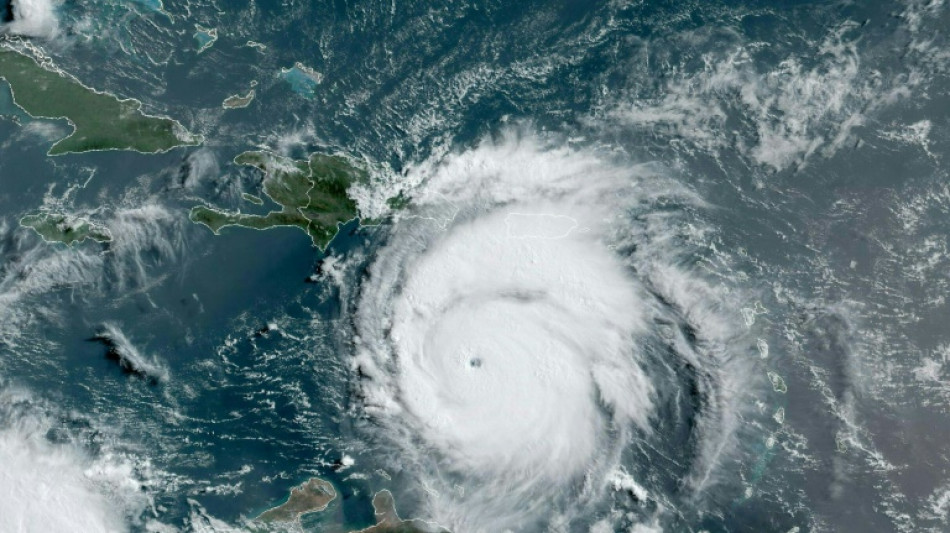
RIO
-0.2200

Hurricane Beryl weakened slightly to a category 4 storm as it churned towards Jamaica Tuesday, after killing at least five people and causing widespread destruction across the southeastern Caribbean.
The rare early-season powerful hurricane was expected to pass near Jamaica on Wednesday as a "near-major" storm, bringing life-threatening winds, storm surge, rain and flash flooding, the US National Hurricane Center (NHC) warned.
A hurricane warning was in place for the island nation, according to the NHC.
In Jamaica, preparations were being made for landfall, with emergency shelters stocking up in Montego Bay and construction sites secured in Kingston, according to the Jamaica Gleaner newspaper.
"I urge all Jamaicans to stock up on food, batteries, candles, and water. Secure your critical documents and remove any trees or items that could endanger your property," Prime Minister Andrew Holness said on X, formerly Twitter.
Hurricane warnings were issued in the Cayman Islands, and public playgrounds were closed as a precaution in Santo Domingo, the capital of the Dominican Republic, with the storm expected to pass south of the country Tuesday.
But in other areas of the Caribbean, the damage was already done -- at least three people were killed in Grenada, one in St Vincent and the Grenadines, and one in Venezuela, officials said.
Grenada's Prime Minister Dickon Mitchell said the island of Carriacou has been all but cut off, with houses, telecommunications and fuel facilities there flattened by whipping winds.
"We've had virtually no communication with Carriacou in the last 12 hours except briefly this morning by satellite phone," Mitchell told a news conference.
The 13.5-square mile (35-square kilometer) island is home to around 9,000 people. At least two people there died, Mitchell said, with a third killed on the country's main island of Grenada when a tree fell on a house.
The family of UN climate chief Simon Stiell is among the residents of Carriacou. His office said his parents' property was damaged.
One person on the island of Bequia in St Vincent and the Grenadines was reported dead as a result of the storm, and a man also died when swept away by a flooded river in the state of Sucre on Venezuela's northeastern coast, officials there said.
World Health Organization chief Tedros Adhanom Ghebreyesus expressed concern about the region, saying on X that his organization "stands ready to support the national authorities with any health needs."
- 'Alarming precedent' -
Experts say it is extremely rare for such a powerful storm to form this early in the Atlantic hurricane season, which runs from early June to late November.
Beryl is the first hurricane since NHC records began to reach the Category 4 level in June, and the earliest to reach Category 5 in July.
A Category 3 or higher on the Saffir-Simpson scale is considered a major hurricane.
Oceans are the main drivers of hurricanes, and there are many factors that go into their formation and intensity -- but heat is a significant one.
The World Meteorological Organization (WMO) said Beryl "sets an alarming precedent for what is expected to be a very active hurricane season."
The US National Oceanic and Atmospheric Administration said in late May that it expects this year to be an "extraordinary" hurricane season, with up to seven storms of Category 3 or higher.
The agency also cited warm Atlantic Ocean temperatures and conditions related to the weather phenomenon La Nina in the Pacific for the expected increase in storms.
- Climate crisis 'chief culprit' -
Stiell, the UN climate chief, said climate change was "pushing disasters to record-breaking new levels of destruction."
"Disasters on a scale that used to be the stuff of science fiction are becoming meteorological facts, and the climate crisis is the chief culprit," he said Monday.
Beryl had maximum sustained winds of 155 miles (250 kilometers) per hour as it headed towards Jamaica and the Cayman Islands on Tuesday, the NHC said in its latest update from 1800 GMT.
Tropical storm warnings have also been issued for the southern coasts of Haiti and the Dominican Republic.
Hurricane force winds extend some 40 miles from the eye of the storm, the NHC said.
Y.Amjad--DT